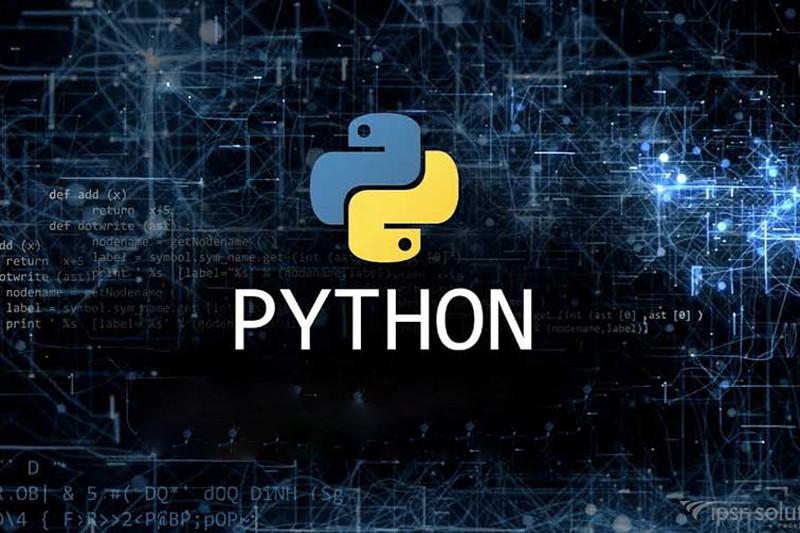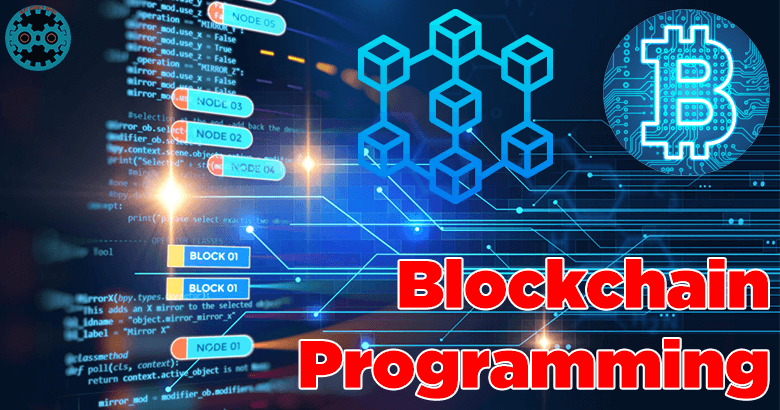What Is Blockchain Programming And Why Is It Promising?
If We Say That Blockchain Is The Future, We Are Not Exaggerating; Because This Technology Will Play An Influential Role In The Taproot Of Important Infrastructures Such As Web 3, Supply Chain, Trade Exchanges, Cyberspace, Security Industry, Network World, Industries, And Many Other Areas.
Blockchain is a type of information recording and reporting system. Its difference from other systems is that the information stored on this system is shared among all network members. This article will review the information you need to enter the world of blockchain programming.

By using encryption and data distribution, the possibility of hacking, deleting, and manipulating registered information is almost eliminated, and transactions are transparent.
Blockchain programming is one of the essential topics that has been paid attention to in the field of blockchain. Blockchains can be used privately and for specific purposes in an enterprise Blockchain organization. Of course, in the enterprise mode, enterprise blockchains cannot cover the primary purpose of this technology, which is decentralization.
When you decide to start learning blockchain, many questions come to your mind. For example, different types of blockchain programming what is? What programming languages work best with this technology, and what platforms are there for blockchain coding? These are the questions that every developer or user interested in the blockchain programming world asks.
Types of blockchain programming
Before a blockchain-based network can be released, the essential features that make up its architecture and protocols must be implemented. These features are defined through coding. For example, before the release of the Bitcoin blockchain in 2009, wrote the rules and regulations governing its status in the C++ programming language.
Decentralized Application (DApp)
In a typical centralized application, backend end code is hosted and executed on centralized servers, While the backend end code of a DApp is performed on a decentralized peer-to-peer network. Similar to an application, there is no particular problem with the front-end coding of a DApp, and it is possible to code the user interface in any language that can communicate wibackendend codes.
Popular blockchain programming platforms
Hyperledger
Hyperledger aims to standardize blockchain technology. It developed with the business world. This project was developed by the Linux Foundation and tried to solve everyday problems. Typically, when using blockchain, businesses need to coordinate their business policies with the target network and solve various problems to use blockchain’s benefits in line with business goals.
To solve this problem, Hyperledger has designed specific blockchains for different fields to meet the needs of other industries. Hyperledger is not a company, digital currency, or blockchain but is similar to an industrial blockchain development hub.
Hyperledger has described its functions on its official website (hyperledger.org): “Hyperledger is a collaborative open source effort in line with advanced blockchain-based industrial technologies.
This global project has emerged with the collective effort of pioneers in finance, banking, the Internet of Things, and the supply chain.
As you can see, Hyperledger is a project that tries to help the development of open source blockchains and support the collaborative development of blockchain-based distributed ledgers by providing tools, training, and holding various events. This project aims to provide a modular blockchain technology that includes a rich and easy-to-use application programming interface (API).
One of the essential points that Hyperledger emphasizes is reducing security risks so that only the parties involved in a transaction communicate with each other and a third party does not secretly track their activities. Therefore, Hyperledger provides all the features of blockchain architecture, data privacy, information sharing, and immutability.
Ethereum
This issue is not only related to tracking the status of transactions but also includes the topic of planning. Ethereum is an open-source blockchain platform for developing decentralized applications (DApps) that are supposed to run on blockchain technology. The Ethereum blockchain platform facilitates the process of scripting or writing smart contracts that are executed through network nodes.
Ethereum allows developers fluent in programming languages such as C++, Go, Python, Java, etc., to develop applications for this platform without any problems. It is necessary to explain that smart contracts are made using Solidity, a high-level, contract-oriented programming language.

Top 5 languages for blockchain programming
applications, but only some of them provide the capabilities required to develop these languages. In the following, we will learn about 5 of these languages.
1. C++ programming language (C++)

Let’s start with the tech world’s oldest and most admired language, the venerable C++. Almost everyone knows that C Plus Plus is an extended version of the C language. In C++, developers can design functions, objects, data types, and anything else they need, call them without problems and use code written in other projects to reduce the coding time of similar projects.
However, many advanced languages are being developed today that do not have the problems of C++; So why should we go to C++? C Plus Plus has unique features that make it attractive.
Blockchain development process It comes with many challenges; So it should be designed like a safe fortress and have efficient management of how resources are consumed. A blockchain is supposed to interact with many untrusted nodes while providing fast service to all of them.
This technology plays a vital role in the success of a digital currency. The blockchain must fully control how the central processor and memory respond to these basic and essential needs and provide high-level services to users.
C++ gives developers the highest level of control over these critical resources.
Another exciting feature of CPlusPlus is Move semantics. Gesture semantics is a way to transfer content between objects instead of copying them; you only get a copy of the content when you need it.
The advantage of motion semantics is that you can get copies of specific data only when needed, improving performance by reducing code redundancy. Therefore, you have efficient memory management and high performance, which are essential for blockchain-based networks.
Another challenge I can point to in blockchain programming is integrating tasks that parallelize well and tasks that don’t. Most languages specialize in a specific task. However, C++’s ability to manage threads and implement parallel and non-parallel tasks is excellent. C++ provides multithreading capabilities focusing on implementing an efficient communication mechanism and optimal single-threading performance. C++ is mainly used in digital currencies and important blockchain projects such as Bitcoin, Ripple, Bitcoin Cash, Litecoin, Stellar, and Monero.
2. JavaScript
JavaScript is one of the most popular languages for developing applications. Almost all software developers believe that JavaScript has become the modern web development engine, along with its powerful libraries and frameworks such as jQuery, React, Angular, and Node. JavaScript interacts with HTML and CSS, allowing developers to design the most flexible applications. Typically, programmers use JavaScript to build interactive web pages.
One of the main features of JavaScript that makes it a good choice for blockchain programming is handling asynchronous programming. With the increase in the number of users in the blockchain, most transactions are done simultaneously; JavaScript can efficiently manage communication between different blockchain nodes.
However, we should not ignore that JavaScript’s ability to manage essential system resources, such as the central processor, is not as good as C++.
Today, websites like web3.js and ethereum.js help developers connect their application front-end to the Ethereum network and smart contracts. Node.js is one of the big web frameworks, So if you have enough skills in working with the above framework, JavaScript can be a good option for blockchain programming. Another good use of JavaScript in the blockchain is the Hyperledger Fabric SDK in conjunction with Node.js.
3. Python

It is a modern and general-purpose programming language, attracting the attention of newcomers to the world of programming and experts in the field of artificial intelligence due to its simple syntax and the similarity of its commands to English grammar.
Python programmers are used in various fields such as web programming, artificial intelligence programming, web-based program development, video games development, applications with the ability to connect to databases, scientific and numerical calculations, etc.
The most attractive aspect of Python is code readability and concise coding, which makes it a good choice for prototyping. In Python, unlike programming languages, indentations are used instead of curly braces to define a block of code; While indentations are used in most programming languages for the readability and beauty of the code, Python uses this technique to manage commands.
Try as you might, you can’t leave Python off this list; Because almost every blockchain ecosystem has one or more public tools written in Python. Developers can use Python to write smart contracts for Hyperledger. Many popular projects like Ethereum Pyethereum that have their implementation use Python to build smart contracts.
4. Go

The GoLang programming language, abbreviated as Go, is a modern general-purpose language developed by Google in 2007 and released to the public in 2012. Go is a statically-type programming language whose syntax is similar to C language. This language tries to provide the functionality of Python and JavaScript to developers in the simplest way. Hence, when you use Go to code different parts of a blockchain project, you won’t face the usual complexities of coding.
In Go, there are methods called Goroutines that enable the execution of multiple parts of a program asynchronously or in parallel, an essential and critical feature in blockchain projects.
The Go language uses threads to more precisely manage running processes; popular languages like Java use this approach. There is a long list of Golang-related projects, but few are more important than similar examples. Go-Ethereum is one of the most critical projects written in Golang. Another important blockchain project written in Go is called Hyperledger Fabric.
This project is one of the large companies’ most popular blockchain solutions. Loom Network, which has found a hot market these days and targets decentralized online games and includes Chaincode, is written in the Go programming language.
5. Solidity
Solidity is a high-level object-oriented, domain-specific, JavaScript-like language developed by the Ethereum team (Gavin Wood, Christian Ritweisner, and others). Solidity is written inspired by functional programming languages such as C++, Python, and JavaScript and is designed to build decentralized applications on the Ethereum platform and the Ethereum Virtual Machine (EVM).
It should explain that the Ethereum virtual machine provides a runtime environment for smart contracts based on the Ethereum platform. Solidity is the most compatible programming language with the Ethereum platform and blockchain technology. Solidity is a statically typed language and supports inheritance, libraries, and complex user-defined data types.











